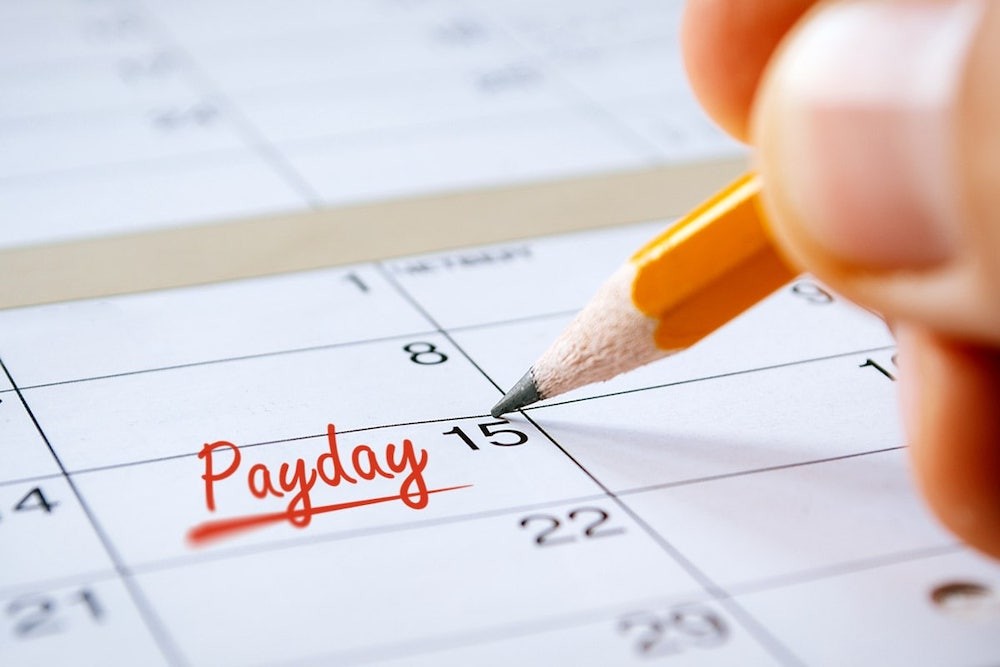Image Source: FreeImages
Paycheck-to-paycheck is an unfortunate reality for many Americans. In fact, 25% of U.S. households live this way on a regular basis. Fortunately, there are several things you can do to break the cycle and get ahead in life instead of always falling behind. The paycheck-to-paycheck cycle is not something that you have to live with forever. You may find yourself in this situation as a result of unexpected expenses or other circumstances that temporarily cause you to spend more than you earn. However, it’s up to you whether you remain in this cycle indefinitely or take steps to get out of it as soon as possible. The sooner you begin working towards financial stability again, the sooner you’ll once again have peace of mind and be able to meet your obligations without difficulty or stress. Here are seven ways that can help break the paycheck-to-paycheck cycle:
Boost your income
One of the best ways to break the paycheck-to-paycheck cycle is to boost your income. This can be done in several different ways, including:
- Finding a better-paying job
- Finding a second job
- Taking on additional freelance work
- Finding a side hustle
- Taking a part-time or online class
- Finding a way to make money from home
- You should also make sure that you’re billing your clients or customers a fair rate so that you’re bringing in more money than you’re spending.
Create a budget and stick to it
The first thing you need to do is create a budget and stick to it. A budget is a spending plan that details how you plan to allot your money each month. Ideally, you want to make sure that the amount you’re spending each month is less than the amount that you’re bringing in. The difference between these two numbers is what will allow you to pay down your debts and build savings. Ideally, you should be saving at least 10% of your income. The more you can save, the better. It will take some time to get back on track financially, so be patient and don’t give up.
Establish an emergency fund
An emergency fund is a savings account that you use only in the event of a true emergency. Emergencies include:
- Unexpected medical bills
- Car repairs or maintenance
- Home repairs or maintenance
- Other financial crises
You don’t know when emergencies will occur but you can be certain that they will happen at some point. The best thing you can do to protect yourself against these types of unexpected expenses is to establish an emergency fund that you can tap into when needed.
Get out of debt
All debt, including student loans and credit card debt, must be paid off as quickly as possible. Credit card debt is one of the worst types of debt that you can have because it has very high interest rates and tends to trap people in a cycle of never ending debt. You should try to eliminate all of your credit card debt as soon as possible. You can do this by making a budget and sticking to it, and then paying off your credit cards one at a time. When it comes to student loan debt, you don’t necessarily have to get it completely paid off as quickly as possible. However, you should make sure that you’re paying as much as you can towards these debts each month. You may want to explore income-driven repayment plans, which may allow you to pay less each month and have your debt forgiven after a certain number of years.
Learn how to invest and start investing immediately
The best way to build wealth and break the paycheck-to-paycheck cycle is to learn how to invest and start investing immediately. When you invest, you’re putting your money to work for you instead of someone else. You can invest in the stock market, real estate, or other investment vehicles. Investing is not a get rich quick scheme. It does take time to build wealth through investing. However, if you start investing now, you’ll be miles ahead of most people once you’ve reached retirement age and have plenty of money to live off of.
Bonus Tip: Save Money on Groceries
Did you know that the average American spends about $200 on groceries every week? That’s nearly $10,000 a year! Ouch! The worst part is, most people are spending even more than that. According to a survey by the Natural Marketing Institute, the average American household spends almost $300 on groceries every week. If your food bill is coming close to the triple-digit mark, you’re not alone. In this blog post, we’ll show you how to save money on groceries and meal prep so that you can take control of your food budget again. Scroll down to read more and let us know if these tips help cut your grocery bill in the comments.
Conclusion
When you’re living paycheck-to-paycheck, it often feels as if you’re one emergency away from financial ruin. You may be hesitant to make larger purchases or fully commit to a career path because you don’t want to risk losing everything you have if something unexpected happens. However, there are several things you can do to break the cycle and start building a better financial future for yourself. By boosting your income, creating a budget, establishing an emergency fund, getting out of debt, and learning how to invest, you can break the paycheck-to-paycheck cycle and start building a better financial future for yourself.





